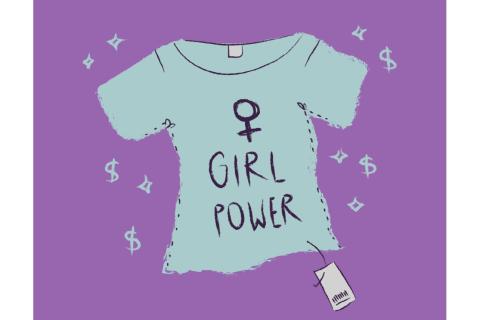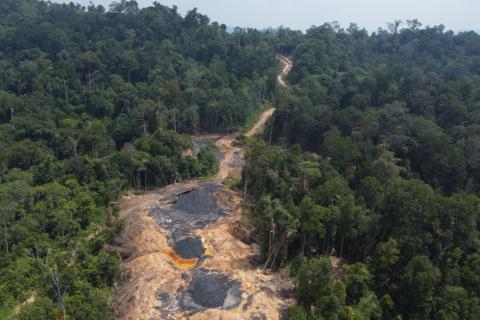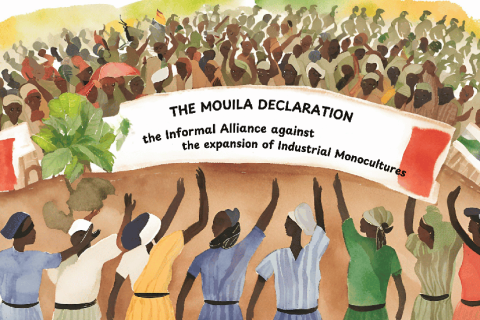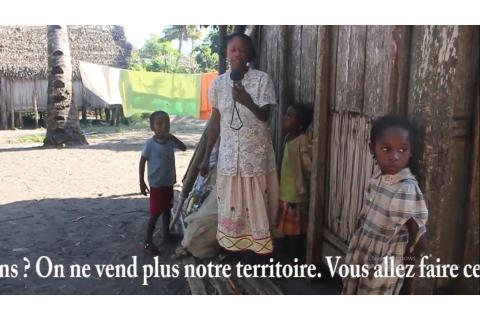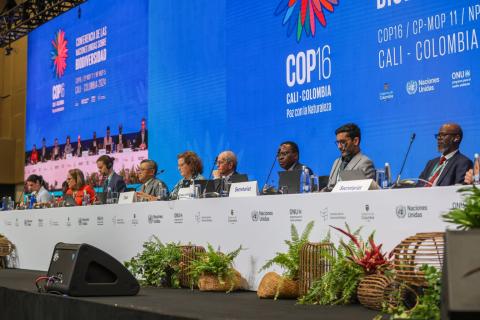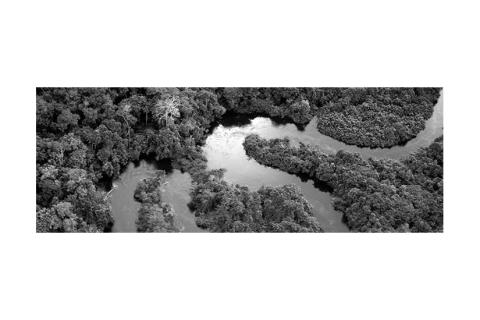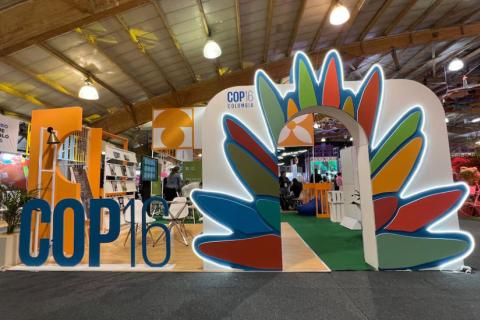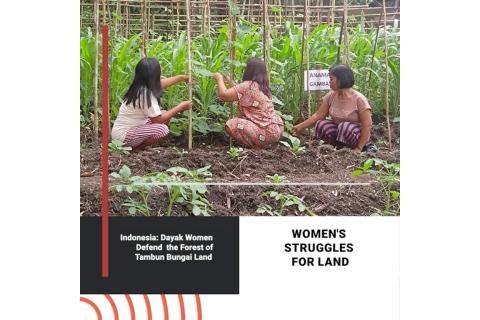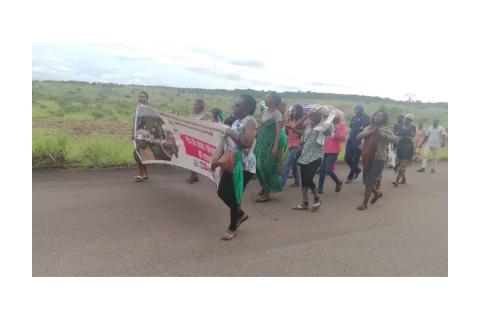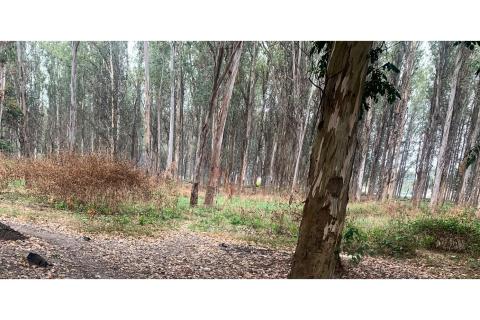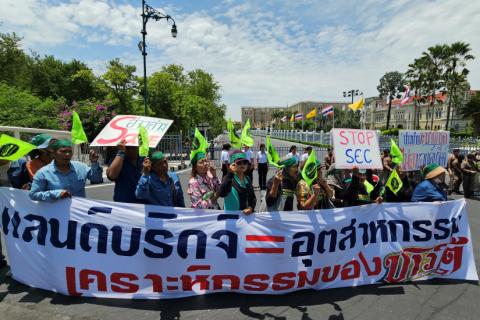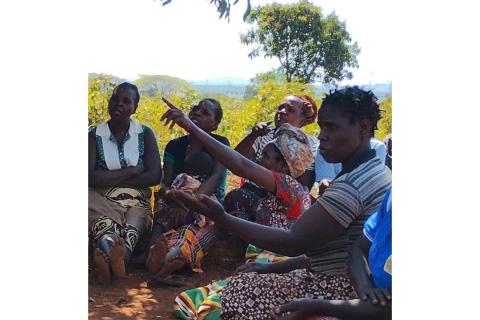Initiatives by NGOs and corporations with a focus on the “gender issue” that distort and depoliticize the feminist struggle are more and more common. The various examples of “purplewashing” do not tackle the structural causes of oppression over women, perpetuating systemic inequalities within the capitalist system.
Bulletin articles
In the province of East Kalimantan, the World Bank is supporting the Indonesian government’s first jurisdictional REDD programme. International conservationist NGOs, TNC and WWF, have been playing a key role in the preparation and execution of the programme. While they proclaim it to be a “success story” (1), this programme is full of contradictions. Available in Indonesian.
The just-released “Mouila Declaration” is a message of resistance, solidarity and unity from communities and grassroots organisations of the Informal Alliance against the expansion of Industrial Monocultures.
“We declare our opposition to the mining project” - that is the message from the community of Sainte Luce to QIT-Madagascar Minerals (QMM) and Malagasy authorities. The community declared their opposition to the company's intentions to mine ilmenite – a mineral used in white paint and plastics, among other products – as this would destroy their lands and fishing grounds. They made their position clear in a letter and video testimonies, which they delivered to the Rio Tinto subsidiary and authorities in December of 2023.
The proposal to “close the biodiversity finance gap” does not address the underlying causes of biodiversity loss. Instead, it intensifies the commodification of nature, which allows the corporate and financial sector to profit from the environmental crisis. Andre Standing, member of the Coalition for Fair Fisheries Arrangements (CFFA), offers an analysis of this situation in this interview, which was published by Acción Ecológica during the COP16 of the Convention on Biological Diversity (CBD).
The article deals with the creation of REDD+ as a “conservation fad”, which served as a parameter for the channeling of resources from investment banks and governments of the global north, immediately also arousing interest among corporations of the food and consumer goods sectors.
The Conference of the Parties (COP16) to the Convention on Biological Diversity (CBD) is being held from October 21st to November 1st in Colombia. This initiative has failed in its goal of halting the alarming loss of biodiversity. For 30 years, instead of putting an end to extractive companies' destruction, the CBD's proposals have worsened the situation – through actions that have undermined both the sovereignty of Indigenous Peoples and communities, and their ability to remain in the territories they inhabit and protect.
This article tells the story of a Podcast that is being jointly launched with Solidaritas Perumpuan, a feminist organisation from Indonesia. This espisode is the third in the series “Women’s struggles for land”, produced by WRM together with organisations from different countries. This one tells the story of women's resistance to oil palm plantations, REDD and a large-scale project for food production (Food Estate) in three villages in Central Kalimantan.
The company Sequoia has obtained a lease over 60,000 hectares for a eucalyptus monoculture project in the Haut-Ogooué province, Gabon. Meanwhile, statements from communities and a survey of more than 1,400 people from the impacted region reveal a total rejection of this plantation project. Additionally, Gabonese government and parliamentary authorities have openly expressed an unfavorable position on the project.
In Congo-Brazzaville, tree planting projects intended for carbon markets have proliferated over the past four years. This concerns large-scale developments of monocultures initiated by oil companies under the seductive term of carbon neutrality and promises of job creation for communities. But in reality, they are neither a solution to the climate crisis nor a benefit for the communities of Congo.
With World Bank support, the Thai government is moving quickly to implement its ‘climate policy’ based on carbon offsetting through the use of so-called ‘green areas’. These areas are projected to cover no less than half of the country´s area. Yet hidden behind this ‘green’ discourse is an economic policy that is heavily reliant on the continued use of fossil fuels. (Available in Thai).
Besides the direct impacts on communities’ lives, eucalyptus monoculture plantations represent absurd and obscene inequality. A group of 45 community people with whom we spoke was shocked to learn that it would take them 2,300 years of non-stop work to collectively earn the same amount that a single Portuguese family, one of the owners of the plantation company they work for, earned in one single year from the profits of their shares in the company.
